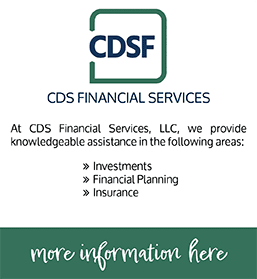
If it looks like you’re going to have a high tax bill this calendar year, there are things you can do to reduce it. Here are five ideas to consider to shrink your tax bill:
1. Defer taxable income
You can try to defer some of your income into next year, but it can be tricky. If you’re an employee, you may be able to request that additional compensation or a bonus be shifted to the next year.
If you’re self-employed, you usually have more flexibility. Cash-basis businesses should consider receiving payment after the end of the year. Try to schedule some of your billable work into the next year.
2. Contribute to retirement plans
Contributions to retirement plans such as 401(k)s and various IRAs can lower your taxable income. For instance, you can contribute up to $18,000 a year to a 401(k) and $5,500 to a Traditional IRA – and more if you are age 50 or older. This will directly reduce your taxable income for the year.
3. Manage retirement withdrawals
If you’re retired, manage your withdrawals from retirement accounts to optimize your taxable income. Also, be sure to account for income when you can’t control its timing. For example, regular Social Security payments (which may be partially taxable), as well as required minimum distributions from Traditional IRAs after age 70½, may push you into a higher tax bracket if you’re not careful.
4. Harvest investment losses
If you have investment losses, consider selling them at a loss before the end of the year to use a strategy called tax-loss harvesting. Investment losses can be used to offset capital gain income, plus $3,000 of ordinary income.
Knowing the rules in this area can be a great opportunity to manage your tax bill. For instance, you must separate short-term investments (those you’ve held a year or less) from long-term investments, and net out the losses and gains in each category separately. Any excess losses after you’re done can then be used to offset remaining capital gains, or up to $3,000 of ordinary income.
Also beware of the “wash sale” rule, which says that after selling an investment for tax-loss harvesting, you can’t buy a “substantially similar” asset for at least 30 days.
5. Shift deductions
If you itemize your deductions, there are many ways to reduce your taxable income by managing these deductions. Here are some ideas on how to do this:
- Since most interest on your mortgage is tax-deductible, consider making your January payment in December. That way there is an additional interest payment available for this tax year.
- While medical deductions are somewhat limited, it could be a good time to take care of those appointments and procedures you’ve been putting off. Schedule appointments before the end of the year so that you can deduct any unreimbursed expenses this year. Also, pay any unpaid doctor bills this year. Special planning is required here, as your medical expenses must exceed 10 percent of your adjusted gross income before they impact your taxable income.
- Consider donating to a charity before the end of the year. Most donations to qualified charities are tax-deductible. Keep accurate and detailed records of all your donations.
If you are looking for ways to reduce your taxes, give us a call at (888) 388-1040. We would be more than happy to help you determine which tax planning options are best for your situation.
Year-End 2017: This newsletter is issued annually to provide you with information about minimizing your taxes. Do not apply this general information to your specific situation without additional details. Be aware that the tax laws contain varying effective dates and numerous limitations and exceptions that cannot be summarized easily. For details and guidance in applying the tax rules to your individual circumstances, please contact us. ©MC
CONTACT OUR EXPERTS




